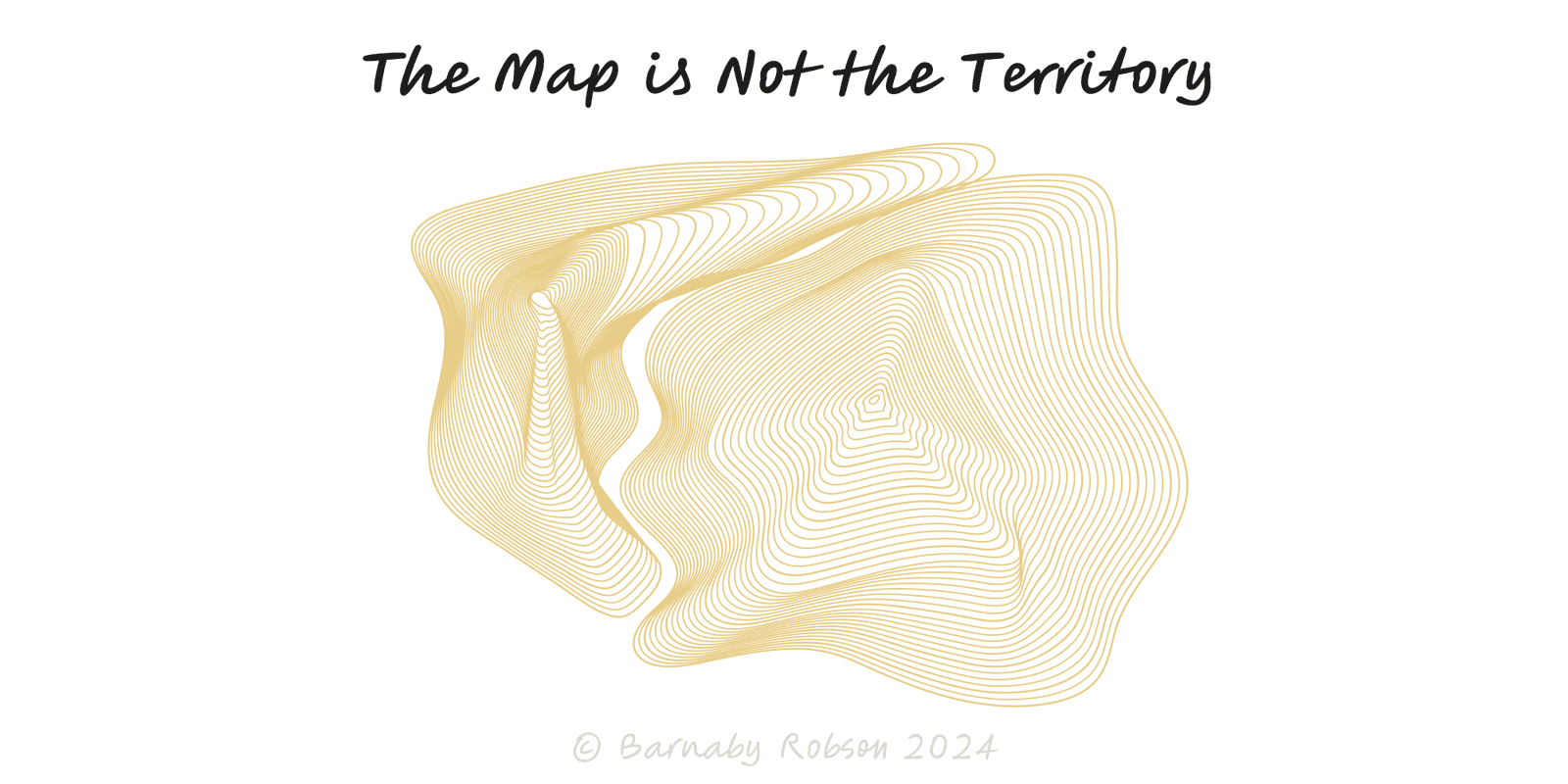The Map is not the Territory
Alfred Korzybski (General Semantics, 1930s); popularised by Gregory Bateson and others

Korzybski’s maxim reminds us that words, diagrams, metrics and mental models are abstractions. They omit detail, distort some features, and depend on assumptions and measurement choices. Treat maps as tools, not truths: use them to navigate, but check against reality, and revise when they mislead.
Abstraction – to think or measure we omit and generalise; useful, but lossy.
Reification risk – speaking as if the model is the world (“the forecast says…”) hides uncertainty.
Assumptions & scope – every map has a scale, projection and use case; beyond scope, errors grow.
Feedback & fit – models earn trust by predictions and out-of-sample performance; poor fit → revise or replace.
Multiple maps – combining perspectives (quant + qual, top-down + bottom-up) reduces blind spots.
Strategy – market models, TAMs, five-forces: use as lenses, not verdicts; validate with customer reality.
Product & data – dashboards are proxies; instrument behaviour and run field checks.
Operations – SOPs and capacity plans need on-the-ground verification.
Risk & finance – VaR, Monte Carlo, scenario trees: disclose assumptions; handle tails explicitly.
Communication – prefer operational definitions (“how measured”) and show limits of applicability.
Label the map – purpose, scope, key assumptions, data sources, time period.
Define observables – what would confirm/contradict the map within the next cycle?
Triangulate – pair your primary map with a second, orthogonal one (e.g., cohort curves + user interviews).
Expose uncertainty – show ranges/intervals, not certainties; mark missing data.
Ground-truth regularly – schedule field checks, user calls, or audit samples; compare map vs terrain gaps.
Update rules – note thresholds that trigger a map change (e.g., forecast error > 20 percent for two periods).
Language hygiene – say “our model estimates/suggests” rather than “proves/predicts” to avoid reification.
Choose the right scale – zoom out/in; switch projections (e.g., unit economics vs total P&L) to match the decision.
Map worship – optimising the KPI while harming reality (Goodhart’s law).
Category errors – applying a model outside its domain (thin-tail maths in fat-tail domains).
Overfitting – a map that matches history but fails live.
Vanity precision – decimals on weak inputs; prefer coarse but honest ranges.
Metric myopia – letting proxies (NPS, DAU) substitute for ends (retention, revenue quality, trust).
Stale maps – environments shift; without review, the map becomes a liability.